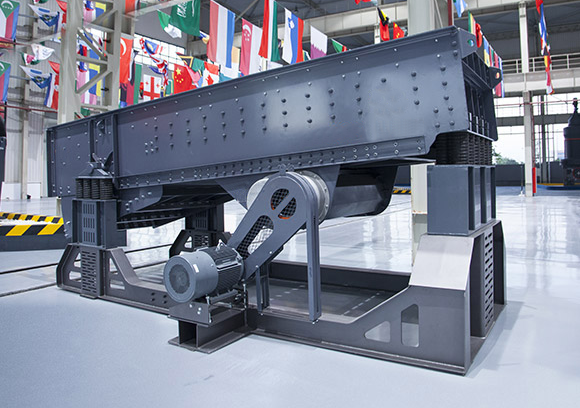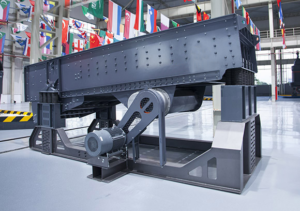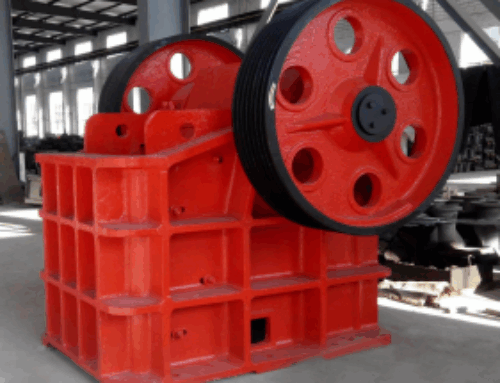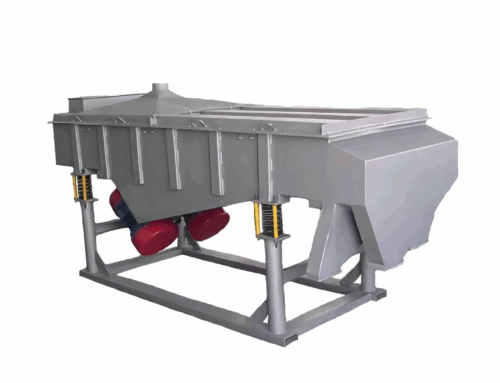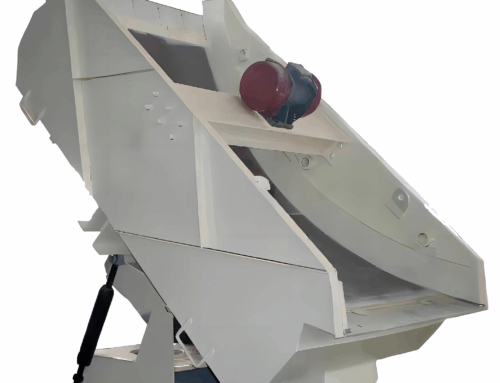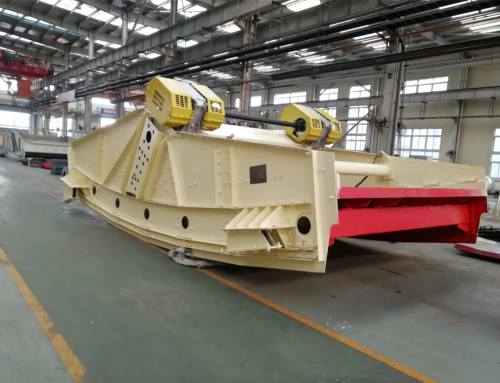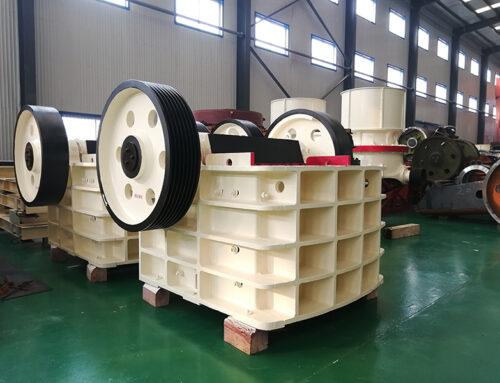In modern industrial production processes, vibrating feeders, as key equipment in the material conveying process, are widely used in many fields such as mining, metallurgy, coal, chemical industry, and building materials. It can evenly and continuously feed block and granular materials from the storage bin to the receiving device, providing a stable material supply for subsequent crushing, screening, mixing and other processes. However, in the actual production process, the production efficiency of the vibrating feeder is affected by many factors. If it cannot reach the ideal state, it will not only increase production costs, but also may affect the smoothness and production capacity of the entire production line. Therefore, it is of great practical significance to explore how to improve the production efficiency of the vibrating feeder.
一. Equipment selection and installation optimization
1.Scientific and reasonable equipment selection
There are many types of vibrating feeders, and different models are suitable for different material characteristics and production requirements. When selecting, first of all, the physical properties of the material, such as particle size, humidity, density, and hardness, should be fully considered. For example, for materials with larger particle size and higher hardness, a heavy-duty vibrating feeder with strong load-bearing capacity and wear resistance should be selected; and for materials with higher humidity, it is necessary to consider its easy adhesion characteristics and select a feeder with an anti-sticking design to prevent material blockage and affect feeding efficiency.
Secondly, according to the production scale and production process requirements, accurately calculate the required feeding amount. Generally speaking, the rated feeding amount of the equipment should be slightly larger than the maximum feeding amount required for actual production to ensure that it can meet the demand during peak production. At the same time, it is necessary to combine other equipment parameters of the production line to ensure that the vibrating feeder and subsequent equipment (such as crushers, conveyors, etc.) match each other in production capacity to avoid inefficient production lines due to insufficient or excessive feeding of the feeder.
2.Standardized and accurate equipment installation
Correct installation is the basis for ensuring the normal operation and efficient production of the vibrating feeder. During the installation process, the operation must be carried out strictly in accordance with the requirements of the equipment installation manual. First, ensure that the foundation of the feeder is firm and reliable, and the flatness and levelness of the foundation must meet the standards, otherwise it will cause abnormal vibration and increased wear of components during the operation of the equipment.
Secondly, when installing the vibration motor, it is necessary to pay attention to the opposite direction of the two motors, and the magnitude of the exciting force should be reasonably adjusted according to the characteristics of the material and the feeding amount. If the exciting force is too large, the equipment will vibrate too violently, increase the wear and energy consumption of the equipment; if the exciting force is too small, the ideal feeding effect cannot be achieved. At the same time, it is necessary to ensure that the connection between the motor and the feeder is firm to avoid loosening during operation.
In addition, during the installation process, attention should also be paid to the connection between the feeder and the storage bin and the receiving device. There should be an appropriate distance and angle between the feeder and the discharge port of the storage bin to ensure that the material can flow out smoothly and prevent the material from causing excessive impact on the feeder; the docking with the receiving device should be accurate to ensure that the material can be accurately and smoothly transported to the next process to avoid material spillage and accumulation.
二. Operation and parameter adjustment
1.Standardized operation process
The operation level and standardization of the operator directly affect the production efficiency of the vibrating feeder. Before starting the equipment, the operator should conduct a comprehensive inspection of the equipment, including checking whether the connection of each component is firm, whether the wiring of the vibration motor is correct, whether the lubrication system is normal, etc. After confirming that there is no abnormality in the equipment, start the equipment in the prescribed order, start the vibration motor first, and then open the discharge gate of the storage bin after the equipment runs smoothly, and gradually increase the feeding amount.
During the operation of the equipment, the operator should pay close attention to the operating status of the equipment, and judge whether the equipment is operating normally by observing the feeding situation of the material, the vibration amplitude and sound of the equipment. If it is found that the material feeding is uneven, the equipment vibrates abnormally, or there is an abnormal sound, the machine should be stopped in time for inspection and troubleshooting. At the same time, according to production needs and material characteristics, the feeding amount should be adjusted in time to avoid excessive or insufficient feeding affecting production efficiency.
When the equipment is shut down, it should also be operated in the prescribed order. First close the discharge gate of the storage bin, and then stop the vibration motor after all the materials on the feeder have been transported. After shutdown, the equipment should be cleaned and maintained to prepare for the next startup.
2.Optimization and adjustment of key parameters
Vibration frequency and amplitude: Vibration frequency and amplitude are important parameters that affect the feeding efficiency of the vibrating feeder. Generally speaking, increasing the vibration frequency can increase the material conveying speed, but too high a frequency may cause the material to jump too violently on the feeder, which is not conducive to the smooth conveying of the material; increasing the amplitude can increase the material conveying volume, but too large an amplitude will increase the wear and energy consumption of the equipment. Therefore, it is necessary to find the best combination of vibration frequency and amplitude through testing and debugging according to the characteristics of the material and the feeding requirements. For example, for materials with smaller particle size and better fluidity, the vibration frequency can be appropriately increased and the amplitude can be reduced; for materials with larger particle size and poorer fluidity, the amplitude needs to be appropriately increased and the vibration frequency needs to be reduced.
Inclination angle of the feeder: The inclination angle of the feeder also has a great influence on the conveying speed and conveying volume of the material. Within a certain range, increasing the inclination angle can speed up the material’s sliding speed and improve the feeding efficiency. However, if the inclination angle is too large, the material will slide down too fast, making it difficult to control the feeding amount. At the same time, it may also increase the impact of the material on the equipment and accelerate the wear of the equipment. Therefore, the inclination angle of the feeder should be reasonably adjusted according to the characteristics of the material and production requirements. Generally speaking, for materials with good fluidity, the inclination angle can be appropriately smaller; for materials with poor fluidity, the inclination angle can be appropriately larger, but usually it should not exceed 15°.
Material layer thickness: The accumulation thickness of the material on the feeder will also affect the feeding efficiency. If the material layer is too thick, it will increase the friction between the materials and reduce the material conveying speed; if the material layer is too thin, the conveying capacity of the feeder cannot be fully utilized. Therefore, according to the model of the feeder and the characteristics of the material, the discharge gate opening of the storage bin should be adjusted to control the accumulation thickness of the material on the feeder to keep it within a reasonable range.
三.Maintenance and care
1.Daily maintenance
Daily maintenance is an important measure to ensure the normal operation of the vibrating feeder and extend its service life. Before the equipment is operated every day, the appearance of the equipment should be inspected to check whether the parts are loose, deformed, worn, etc., and the loose bolts should be tightened in time, and the parts with severe wear should be replaced. At the same time, the lubrication system should be checked to ensure that the lubricating oil at each lubrication point is sufficient and the oil quality is good, and the lubricating oil should be added or replaced regularly.
During the operation of the equipment, pay attention to the temperature, vibration and sound of the equipment. If the equipment temperature is too high, the vibration is abnormal, or there is an abnormal sound, it should be stopped in time for inspection, find out the cause and deal with it. In addition, the material residue and dust on the feeder should be cleaned regularly to prevent the accumulation of materials and dust from entering the equipment and affecting the normal operation of the equipment.
2.Regular maintenance
In addition to daily maintenance, the vibrating feeder also needs to be maintained regularly. The period of regular maintenance can be determined according to the frequency of use of the equipment and the working environment. Generally, a comprehensive maintenance is carried out every period of time (such as one month or three months).
The content of regular maintenance includes inspection, cleaning, adjustment and replacement of various parts of the equipment. For example, check the bearing wear of the vibration motor and replace the worn bearings in time; clean the vibration springs, exciters and other parts of the equipment to remove oil and impurities; adjust the exciting force and installation angle of the vibration motor to ensure the good vibration performance of the equipment. At the same time, check the electrical system of the equipment to ensure that the electrical components are firmly connected and the insulation performance is good to prevent electrical failures.
3.Timely repair of faults
Despite good maintenance and care, the vibrating feeder may still have various faults during long-term operation. When the equipment fails, it should be repaired in time to avoid the expansion of the fault and affect production efficiency. The maintenance personnel should have professional technical knowledge and rich maintenance experience, be able to quickly and accurately determine the cause of the fault, and take effective maintenance measures. During the maintenance process, it is necessary to strictly follow the maintenance operation procedures to ensure the quality of the maintenance. For the replaced parts, it is necessary to select products with reliable quality and matching specifications and models to avoid the equipment from failing again due to parts quality problems. After the maintenance is completed, the equipment should be debugged and tested to ensure that the equipment is put into production after it resumes normal operation.
In summary, improving the production efficiency of the vibrating feeder requires multiple aspects and comprehensive and effective measures. Only by comprehensively optimizing each link can the performance advantages of the vibrating feeder be fully utilized and the production efficiency be improved.

